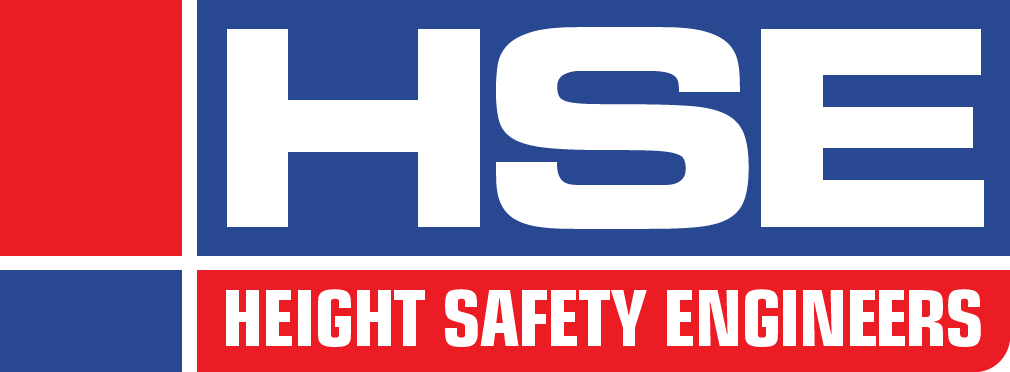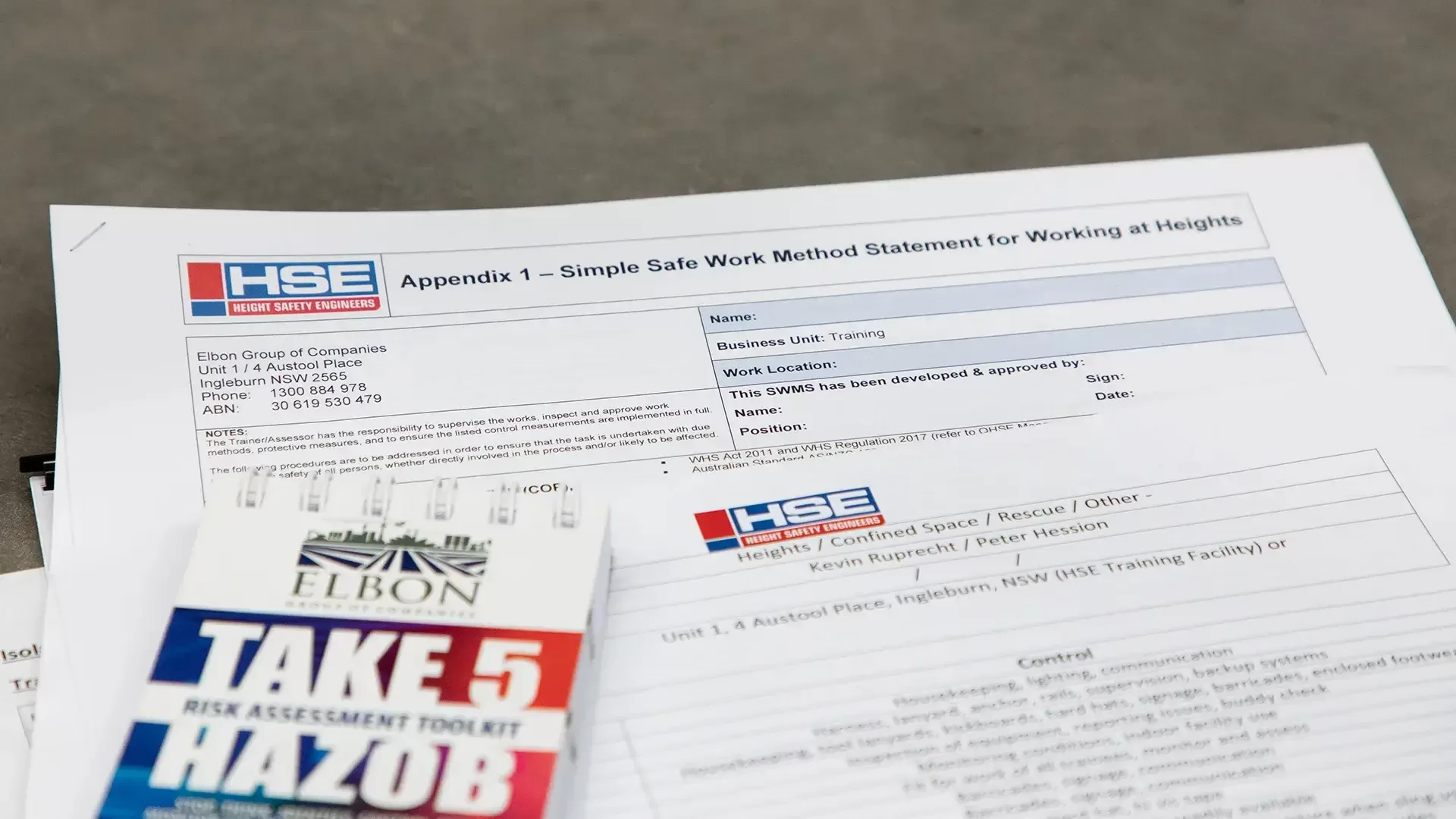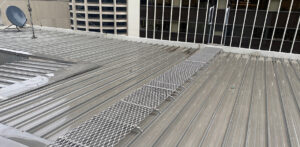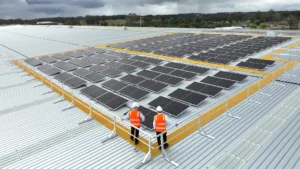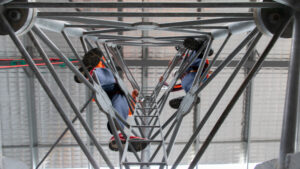Every building owner, facility manager, contractor and worker should be doing risk management in one form or another.
Risk management is a task that needs to be undertaken at just about every level of a job – from the planning stages through to going out on site. It is a vital part of ensuring that work can be completed efficiently, but more importantly assists in keeping workers safe from accident and injury.
Understanding how risk management works as part of a PCBU’s (person conducting a business or undertaking) duty of care, which is outlined in the various work health and safety legislation and regulations in the jurisdiction they are working in.
In this blog post, our team of experts provide an overview of some important facets of risk management, and how it can apply to your workplace or job site.
What is risk management?
Risk management is, broadly, defined as the process of identifying, evaluating, and addressing items that may hinder the achievement of a specific outcome. It involves identifying what has the potential to go wrong, evaluating both the likelihood of it occurring and the potential worst-case outcome if it does occur, and then determining the best way the issue can be mitigated.
While risk management takes on many different forms across several industries from finance to compliance to hospitality and healthcare, to name a few.
When it comes to working at heights, as well as other high-risk environments, risk management is the process undertaken to protect workers, and others, from the potential to suffer an injury while work is being completed.
What is required to manage the risks at a workplace is described through a range of legislative instruments, codes of practice and Australian standards. These work to produce criteria around duties of care, processes required and the level to which safety systems need to be designed.
Why is risk management important?
In relation to high-risk work, risk management’s primary reason for being is to protect workers from suffering injuries while going about their jobs.
Undertaking a risk management process is also important for protecting employers, contractors, facility managers and others acting as a PCBU against holding liability in the event of an accident.
Under work health and safety legislation, the PCBU is the party responsible for ensuring places of work and methods of work are safe for workers.
What introduces complexity to the safety equation is that there can be multiple PBCUs for single job, and those PCBUs can all be responsible for different aspects of the workplace’s safety.
For the PCBU, understanding what they need to address begins with completing a risk assessment for the job.
Conducting a risk assessment
Typically, a workplace’s risk management process starts with a risk assessment. Without knowing what the risks are in a workplace, and evaluating their significance, mitigations cannot then be developed and implemented.
There are a couple steps that need to be taken to complete a risk assessment.
First, the work being undertaken and the environment it is being undertaken in need to be considered. What is being done? Where is it being done? Who is doing it?
Second, think about what can potentially go wrong or other aspects of the job that could place the worker at risk. What accidents can you imagine happening while the work is being completed? Is there anything that could occur that introduces a level of danger? This step can require a bit of imagination, but it is important that every component and step of the job be thought through in terms of how it could lead to someone suffering an injury.
Third, assess the likelihood of those accidents occurring. For example, one risk of working outside on the roof of a building is that a worker could get struck by lightning. However, that would be considerably unlikely to occur. Undertaking work while it is windy or in extreme cold is something that would be relatively likely to happen, however.
Fourth, imagine what the likely consequences of that accident or situation coming to pass would be. Are they severe? What would happen to the person on the receiving end? Would they need to go to hospital?
Finally, with all that information at hand, each risk can be assessed using a matrix that provides a rating. This rating is then used to determine the priority the risk has when working out mitigations. There is no set way this matrix needs to look, but often they are like this one:
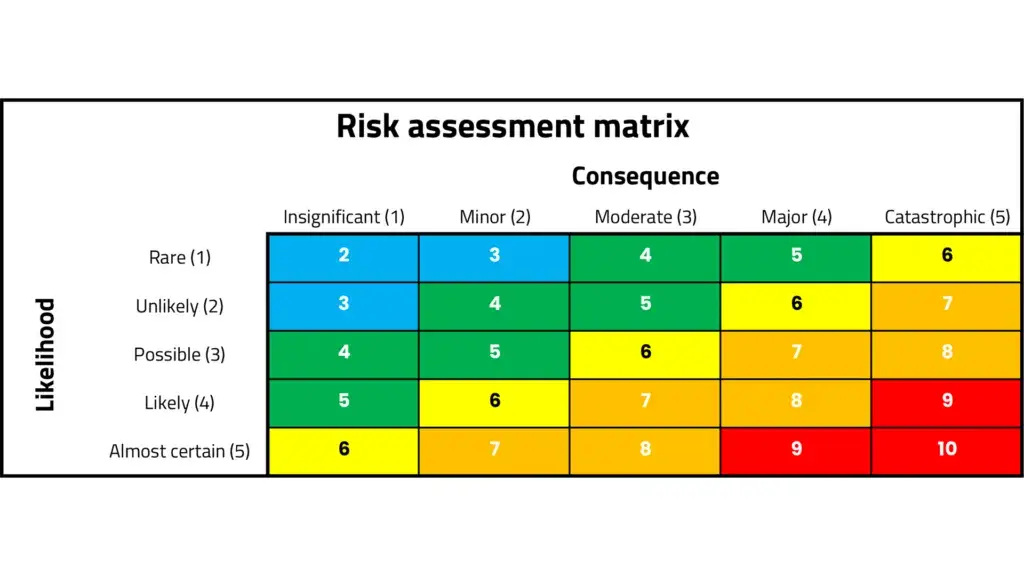
Highly likely to occur situations with severe consequences are given a high-risk rating. This indicates that they need to be considered seriously, with sufficient mitigations put in place to assist in minimising their chance of occurring.
Unlikely to occur situations with minimal consequences may just require workers be made aware of their potential.
In determining how each risk is to be mitigated, each mitigation should be tested by reapplying the risk assessment process to it. This can compare the same situation with and without the mitigation in place to see what improvements, if any, have been made. If the proposed mitigation does not adequately reduce the likelihood or severity of an accident, then another approach will need to be taken.
Undertaking safe work
Risk management does not end with the risks being identified and mitigated. PCBUs must then work to ensure that work is carried out in a safe manner once workers attend the site.
Like many other things in the field of safety, this can take on different forms depending on the specifics of the situation at hand, but generally can involve:
- Making sure workers are adequately trained and prepared for the job.
- Giving workers the tools required to carry out the job.
- Making sure workers fully understand the safety systems and safe work processes in place to access the work area.
- Having safe work methods and procedures in place.
- Having rescue and emergency response plans and equipment in place should an accident occur.
Everyone from the building owner to employers and contractors down to the individual worker has a duty of care to make sure that all work is carried out correctly and safely.
Getting help with risk management
Height Safety Engineers are the experts when it comes to working at heights and other high-risk environments. We can provide detailed, thorough safety audit inspections reports for individual buildings as well as portfolios of assets under management to assist in the identification, assessment, and mitigation of safety risks.
For architects, builders and others looking to make sure they have covered their safe access and height safety requirements during the design stage, we can provide concept designs and consulting services. These ensure your building is safe from day one of occupation.
Discuss your safety needs with our team by contacting us on 1300 884 978 or email enquiries@heightsafety.net.
